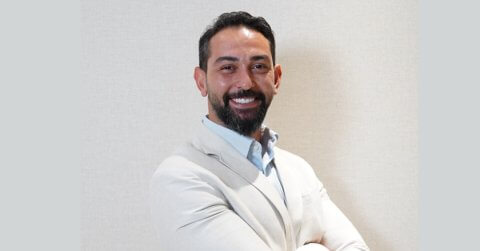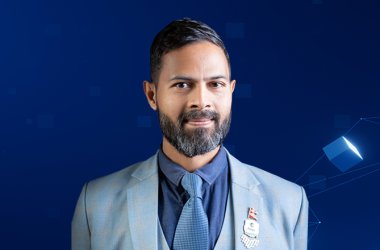
Ahmad Fida, Chief Security Officer at LinkShadow, delves into the strategic considerations involving emerging AI technologies and the importance of fostering innovation in this exclusive interview.
How does your organisation envision contributing to the region’s ambitious AI -driven cybersecurity initiatives, and in which areas do you see private–public collaboration as most vital to advancing these security and innovation goals?
We are dedicated to harnessing cutting-edge AI technologies to enhance overall security postures significantly. By actively engaging in regional AI initiatives, we strive to drive innovation and facilitate the exchange of best practices that uplift the entire ecosystem. Strategic partnerships between the public and private sectors are fundamental, enabling the consolidation of resources, expertise, and intelligence essential for effectively countering sophisticated cyber threats.
As emerging technologies such as Gen AI and Agentic AI continue to reshape industries, how do you strike the right balance between rapid adoption for competitive advantage and ensuring resilience, security, and regulatory alignment?
To maintain a well-balanced approach between rapidly adopting emerging technologies such as Generative AI and Agentic AI, while ensuring resilience, security, and compliance with regulations, several key elements must be integrated:
First, closely monitoring usage of AI systems is essential. This includes tracking activity to detect deviations or misuse and enforcing fair usage policies that define limits and acceptable behaviours for AI tool consumption. Such policies ensure that resources are used responsibly without excessive or inappropriate use that could introduce security or operational risks.
Second, ongoing awareness and education initiatives are vital to equip all stakeholders with knowledge about the capabilities, risks, and ethical considerations surrounding AI deployment. These programs also reinforce compliance requirements and promote cautious handling of AI-generated content.
Third, it is critical to embed regulatory requirements into the AI governance framework. This includes adhering to data privacy laws, cybersecurity frameworks, and the emerging landscape of AI-specific policies. A comprehensive Generative AI usage policy should clearly outline principles for transparency, accountability, data privacy, bias mitigation, and appropriate use cases aligned with both external regulations and internal standards.
Moreover, clear procedures must be in place to handle complaints and incidents related to AI use, such as breaches of policy, ethical concerns, or bias complaints. These mechanisms support organizational accountability and continuous improvement.
By combining these practices—actively monitoring and managing AI utilisation, fostering education and awareness, rigorously aligning with regulations, and defining strong policies including fair use of Generative AI—organisations can confidently pursue innovation while maintaining robust security, compliance, and ethical integrity.
What role do you believe technology leadership should play in redefining business models and creating new value ecosystems across the Middle East?
Technology leaders in the Middle East play a crucial role in reshaping business models and building new value ecosystems by thoughtfully embracing AI and prioritising data security. Their challenge is to foster an environment where innovation can thrive, but not at the expense of security, ethics, or compliance.
By promoting strong data governance and integrating AI responsibly, these leaders help organisations explore new opportunities while keeping sensitive information safe and trustworthy. They encourage collaboration across industries, creating connected ecosystems where data can be shared securely and insights from AI drive smarter decisions and competitive growth.
Take, for example, the UAE’s National AI Strategy, which focuses on embedding AI in sectors like healthcare and government services with a clear emphasis on protecting personal data. In Saudi Arabia, Vision 2030 is pushing forward AI-powered smart cities, balancing cutting-edge technology with the necessary cybersecurity safeguards. Banks across the region are also turning to AI for fraud detection, combining innovation with compliance to meet local and global standards.
Beyond technology, these leaders act as connectors, bridging the gap between regulators, IT teams, and business units to ensure everyone is aligned on ethical AI use and data privacy. They emphasize educating teams about responsible AI practices and staying ahead of evolving regulations.
In short, thoughtful technology leadership in the Middle East is about building an innovative, secure future—where AI unlocks new possibilities without compromising trust or safety. This balanced approach is key for both organisational success and the region’s ongoing digital transformation.
Looking ahead, which transformative technologies do you believe will define the region’s global standing over the next decade, and how are you preparing your organisation to lead in that shift?
Looking ahead, several transformative technologies will play a key role in defining the Middle East’s global standing over the next decade. Among these, advanced data security and management frameworks that enhance overall data posture, identity-centric security, and the adoption of a centralised cyber mesh architecture for integrated and resilient security will be crucial.
LinkShadow is moving toward a flexible security platform that connects all parts of our systems—whether remote offices, cloud platforms, or on prem infrastructure—into a single, seamless protection network. This “cyber mesh” lets us defend against threats more effectively by sharing data and security controls everywhere from on Premise to Multi Cloud architectures.
Moreover, we are investing in spreading awareness, process refinement, and collaboration across Enterprises and cybersecurity vendors to ensure these technologies deliver maximum business impact and align with regional regulatory requirements. This strategic focus positions us not only to lead in technological innovation but also to safeguard trust and resilience as the ecosystem evolves.
Image Credit: LinkShadow





